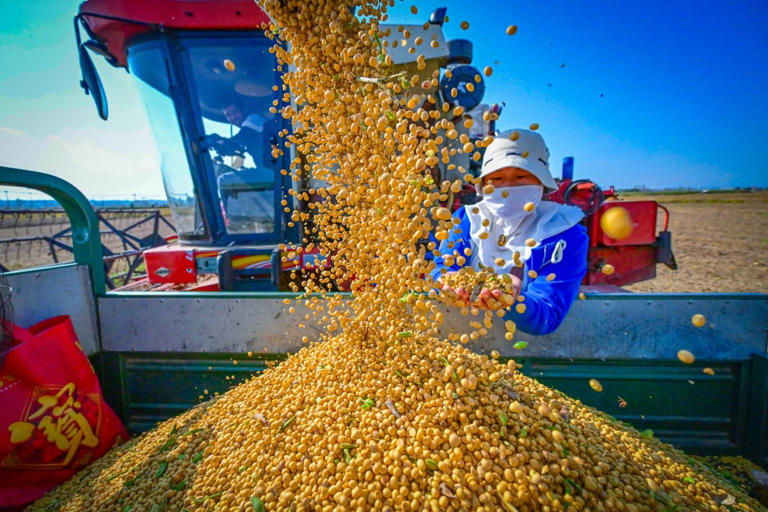China is poised to grow more soybeans and improve the crop’s yield over the coming decade amid an accelerated self-sufficiency drive, and the nation’s more abundant domestic harvests are expected to hit American exporters and farmers who have long relied on China’s business.While the nation of 1.4 billion people will continue seeing a “tight balance” between the supply and demand of food, agricultural authorities say China’s reliance on imports is set to decrease as it prioritises domestic production of soybeans, which represent the bulk of its agricultural imports.
Overall grain production in the country is projected to increase to 753 million tonnes by 2034 from last year’s 706.5 million tonnes, with a 38 per cent improvement in per-unit soybean yield, according to the 2025-34 China Agricultural Outlook Report released on Sunday by an expert committee of the Ministry of Agriculture and Rural Affairs.
Do you have questions about the biggest topics and trends from around the world? Get the answers with SCMP Knowledge, our new platform of curated content with explainers, FAQs, analyses and infographics brought to you by our award-winning team.Soybean trade is among the most contentious battlefields in the US-China tariff war, as the oilseed remains the top American agricultural export to China despite its diversification efforts in recent years.
With accelerating farming technologies and breeding new varieties, China’s overall per-unit grain yield is projected to increase 7.8 per cent by 2034, and the average annual soybean yield is estimated to grow from 2,001kg per hectare last year to 2,775kg per hectare, according to the report. A hectare equals 2.47 acres.
The country is also expected to prioritise soybean production in terms of its growing structure, with sown area maintaining an upwards trend, and the rice and corn areas decreasing, the report said.
Still, that is well behind the level on US farms, where soybean yield in the past five years averaged 3,057kg per hectare, according to figures from the US Department of Agriculture.China’s soybean imports last month slumped by 36.8 per cent, year on year, to 3.5 million tonnes – the lowest in 17 years, according to Chinese customs data.
The main reasons include Chinese oil mills avoiding US soybeans due to tariffs, along with delays in Brazilian soybean shipments, according to a research note from agricultural portal Cngrain.com at the weekend.
Since the first trade war, China has made Brazil its largest soybean supplier, supplanting the US, while also working to improve domestic output and finding other types of feed protein to replace soybeans.
Stan Born, a soybean and corn farmer from the US state of Illinois, who is also on the American Soybean Association’s board of directors, said the two countries have enjoyed “a long and mutually beneficial trade relationship on soybeans”, which has become “quite problematic”.
Regarding whether Brazil could possibly fill the gap amid the current tariff deadlock, Born said, “based on Brazil’s current marketing year production, they have the capacity to increase exports”.
“My hope is that both our governments will quickly begin to engage in productive dialogue and reach a ‘phase-two’ agreement to get past these issues,” he said, referencing the so-called phase-one trade deal between China and the US that was reached during President Donald Trump’s first term.










